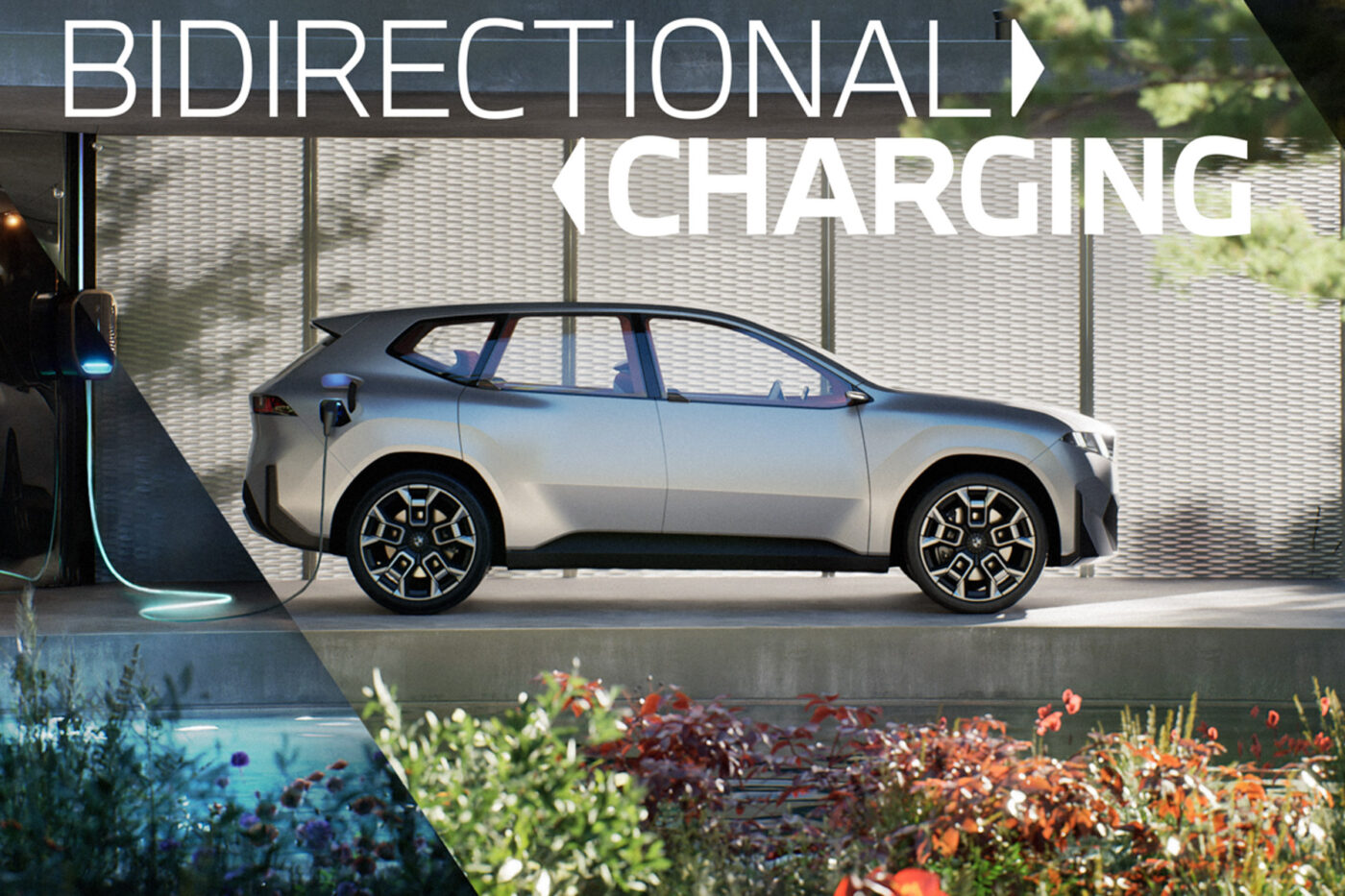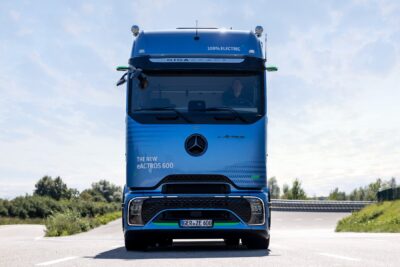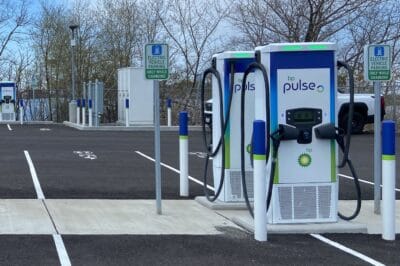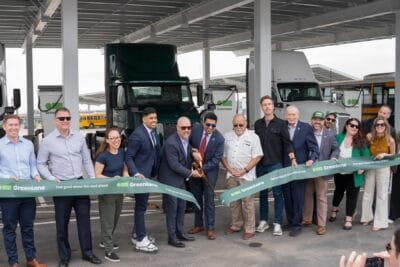
How bidirectional charging can become part of our everyday lives – Six questions for Johanna Bronisch from UnternehmerTUM
Pilot projects have repeatedly demonstrated the advantages of bidirectional charging of electric cars. For the individual customer, there can be significant savings or even income. For energy suppliers and grid operators, there are numerous possibilities: If a parked fleet of electric cars can be intelligently controlled, it can be used as an energy source for the grid.
Despite these advantages, the technology has, so far, only been used in pilot projects. Although there have been isolated advances from industry, the products are still so expensive that the investment is hardly worthwhile. So, how can bidirectional charging be implemented? Are fresh ideas from startups, so from outside large corporations, needed?
Ahead of the Vehicle2Grid conference, which will take place at the beginning of April, we talked to Johanna Bronisch, Head of Energy Innovation at UnternehmerTUM, about these topics. At Europe’s largest startup and innovation centre, she is working on building a cross-sector ecosystem and heads UnternehmerTUM’s cooperation platform for companies at the interface between the energy and transport sectors.
Ms Bronisch, bidirectional and smart charging are seen as potential game changers for electric mobility: electric cars become part of the power grid and can even make money while they are charging. At the same time, grid operators benefit because they can relieve the pressure on their grid with smartly controlled charging processes. And yet the big breakthrough has so far failed to materialise. Why is that?
I think we can separate two topics here: bidirectional charging and smart charging. The latter does not necessarily have to be bidirectional and can still generate added value for users and grid operators.
In the case of bidirectional charging, the central obstacles for the successful introduction of V2G are certainly the lack of incentives for end customers, the lack of or heterogeneous technical standards and the poor availability of interoperable and affordable hardware. Furthermore, we urgently need a harmonised and customer-centric process for exchanging data between the various systems. The German Federal Ministry of Education and Research’s ‘Coalition of the Willing’ has been working hard for over a year to overcome these hurdles not only in Germany but also in Europe. However, I would like to see even broader support from the political arena!
The obstacles to smart charging are not quite so diverse, so it is all the more disappointing that we have not yet managed to implement it. The reason why there are still no incentives for end customers to act in a grid-friendly manner is simple: the transport costs of electricity are currently reflected in the electricity price as a static fee, whereas local utilisation is not reflected, among other things, due to a lack of observability. Whether there is currently a bottleneck in the local grid and additional consumption would even cause a limit violation, or whether additional consumption would even relieve the grid due to high renewable energy generation, is completely unknown to customers. We urgently need to change this.
That is precisely what we are working on in an industry-financed co-innovation project called Grids & Benefits, which is also under the patronage of the Coalition of the Willing for V2G. We are currently working with the companies Bayernwerk, BMW, EWE Netz, LEW, Maingau, Octopus Energy, TenneT, The Mobility House, TransnetBW and RWTH Aachen on the conceptual design for grid-supporting incentives.
Vehicle-to-grid, as an interface between the energy and mobility sectors, offers a lot of potential for positioning yourself as a startup with your own business idea. At UnternehmerTUM, the Center for Business Creation and Innovation of the Technical University of Munich, you work as Head of Energy Innovation together with corporate and startup partners precisely at this interface. What do you think are the most interesting approaches right now?
The project mentioned, with the participation of The Mobility House and Octopus Energy, is giving us exciting insights. I think the focus has to be on the customer-centricity of the products: the easier it is to use and integrate into everyday life, the better.
Especially when it is no longer about early adopters, but about ordinary drivers for whom a dynamic electricity contract does not have the excitement of a blockbuster, or who do not want to wire various hardware components, then products and hardware must be designed to be simple. I don’t think that we will ever have 80 million electricity market experts in Germany. It means that products that enable cost savings at limited risk and without sacrificing comfort will be successful here. In addition, necessary behavioural changes should be as easy as possible to process, such as maximising the time spent in bed with a cold.
The principle and advantages of bidirectional charging are quickly and easily explained, but the practical implementation is incredibly complex due to the countless regulations and special requirements of the automotive and energy industries. Does this slow down innovation in this area?
I am ambivalent here. It certainly slows down the speed at which young companies can develop and, above all, iterate new business models, that is, adapt and improve them in fast feedback loops. Particularly when it comes to concepts for end customers, such as the integration of V2G into my everyday life, I would have to try out different approaches quickly and pragmatically. Due to the high regulatory hurdles, this is indeed not easy, but it is of course also well justified in the systemic relevance and complexity of the electricity system. When it comes to smart meters, one of the biggest roadblocks for many new business models, I think we could take more of an approach from our European neighbours. We need to move faster here. We also consider regulatory test areas to be extremely important and would welcome more support here, both from the government and from the regulatory authority.
So far, the automotive industry has not even reached a consensus on whether bidirectional charging is better done via alternating current or via direct current. What scope is there for startups when such fundamental decisions have not yet been defined in the industry? Or is there a great risk of backing the wrong horse?
Of course the latter applies, but I think it is also part of the entrepreneurial spirit to be able to deal with such uncertainty. Uncertainty can also create opportunities: for example, I can focus specifically on bidirectional charging at home, dominate a system landscape in AC, expand my technical USP and rely on strong partnerships in this ecosystem. Alternatively, I can also make openness to both approaches the core of my brand and thus differentiate myself.
At the Vehicle to Grid symposium in Aachen at the beginning of April, you are hosting the session on system integration. Practical tests have shown that the vehicles themselves and isolated systems work. So, does system integration now depend on the vehicle and energy world being connected in a truly intelligent way?
That’s fair to say. I’m really looking forward to the session, which boasts an excellent line-up and in particular includes international perspectives from which we can certainly learn a lot. The exciting thing is not only the merging of systems, i.e. an EU-wide, highly complex, finely tuned power grid with an EV fleet consisting of millions of individual assets, but also the merging of industries: different worlds are coming together here. That is precisely why cross-company collaboration in this area is so beneficial: system integration must first and foremost take place at the human level. In order to achieve this, space must be created for constructive and targeted exchange and for testing. We do this on a small scale in our projects, but so do others, such as the FfE with its pioneering consortia like BDL and BDL Next or the Coalition of the Willing of the German Federal Ministry of Education and Research. We will see what possibilities arise from this year’s V2G conference.
Refuelling was very easy for the customer, as is charging at their own wallbox – as long as the electricity only flows from the grid into the battery. How can a bidirectional charging process be made as easy as possible for the customer, but at the same time as transparent as possible?
The question of how to combine ‘simple’ and ‘transparent’ is one of the most difficult for me. I have already made it clear earlier that I advocate simple product strategies that are based on the customer’s perspective and habits. This enables customers to integrate the necessary behavioural adjustments (e.g. maximum duration of infection, stating SoC requirement at the time of departure) into their daily lives. The rest, i.e. the optimisation of charging and discharging processes, is handled by the aggregator or flex marketer.
Now for transparency: algorithmically controlled energy flows can be displayed visually. Whether the complexity of the control increases understanding and customer satisfaction is questionable for me. Added to this is the question of whether I, as a flex marketer, want to link electricity flows one-to-one with cent amounts and make them transparent? Since the business model of the flex marketers is subject to a certain risk, not least due to the error margin of electricity price forecasts and customer behaviour, I may have to allow them to do a total calculation and pay me a flat rate. Of course, transparency suffers as a result. But is that so bad? I am very curious to see whether the widespread price curves that can be seen in many providers’ apps today will last in the long term, or whether we will move more in the direction of flat rates. As long as I, as a customer, can be sure that my battery will always have enough charge, I am certainly more willing to hand over optimisation and do without full transparency.
The interview is part of electrive’s media partnership with ‘Vehicle2Grid’ from 2 to 3 April in Aachen, Germany. Johanna Bronisch’s session on system integration will take place on 2 April from 12:55 to 2:55 p.m.





1 Comment